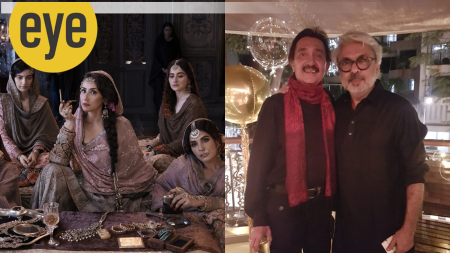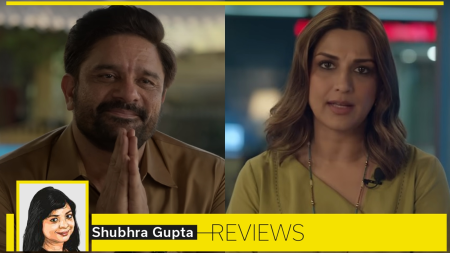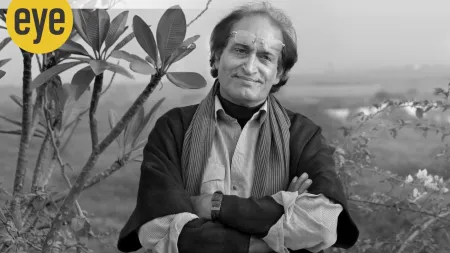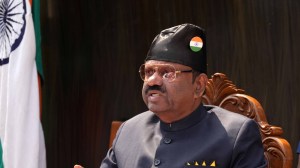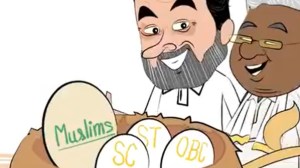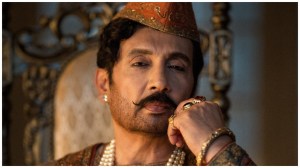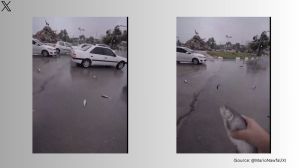- India
- International
UPSC Key | 25th April, 2024 — Inheritance tax, Rwanda bill, illegal forex trading and more
Exclusive for Subscribers from Monday to Friday: How are Inheritance tax and Rwanda bill relevant to the UPSC Exam? What significance do topics like illegal forex trading and VVPAT have for the preliminary and main exams? You can learn more by reading the Indian Express UPSC Key for April 25, 2024.
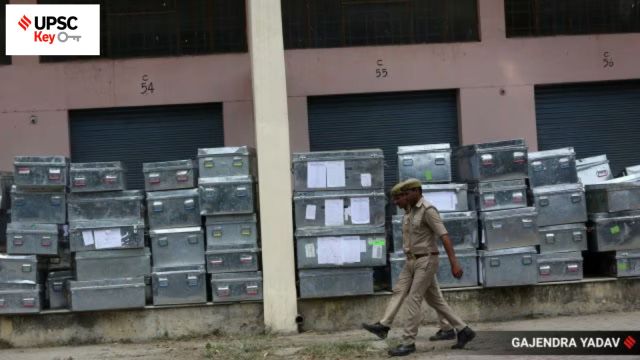 High security at VVPAT and EVM machine center in Noida on April 16. Know more in our UPSC Key. (Express Photo by Gajendra Yadav)
High security at VVPAT and EVM machine center in Noida on April 16. Know more in our UPSC Key. (Express Photo by Gajendra Yadav)Important topics and their relevance in UPSC CSE exam for April 25, 2024. If you missed the April 24, 2024 UPSC CSE exam key from the Indian Express, read it here.
🚨 The Indian Express UPSC Essentials brings to you the April edition of its monthly magazine. Click Here to read. Share your views and suggestions in the comment box or at manas.srivastava@indianexpress.com🚨
Govt & Politics
Verification of VVPAT slips: Top court says source code of EVMs cannot be disclosed
Syllabus:
Preliminary Examination: Indian Polity and Governance
Mains Examination: GS-II: Governance, Constitution and Polity.
What’s the ongoing story- Stating that no candidate has yet pointed to a mismatch between the votes polled on Electronic Voting Machines (EVMs) and the slips printed by the Voter Verifiable Paper Audit Trail (VVPAT) machine, the Supreme Court Wednesday reserved its order on a bunch of petitions seeking 100 per cent verification of votes with the slips, saying it cannot issue directions on the basis of mere suspicion.
Prerequisites:
— What is an electronic voting machine (EVM)? How does it work?
— When were EVMs first used in elections?

— In which Lok Sabha election were EVMs used in every booth?
— What are VVPATs?
— Read Article 324 of the Indian Constitution and the Election Commission of India.
— Representation of People Act, 1981.
Key takeaways:
— A two-judge bench of Justices Sanjiv Khanna and Dipankar Datta also said “we cannot control elections” and “we are not the controlling authority of another constitutional authority”.
— The bench reiterated that the source code of the EVMs should not be disclosed as the Election Commission of India (ECI) informed it that the micro-controllers installed in the machines are one-time programmable and cannot be changed.
— Answering the bench’s query on the microcontroller of the machines on Wednesday, an ECI official explained that all three units in an EVM — a Ballot Unit, Control Unit and VVPAT — have their own microcontrollers housed in secure unauthorised access-detection modules.
— The official informed the court that the EVMs/VVPATs are stored for a period of 45 days after polling as the limitation period for filing election petitions under The Representation of People Act, 1981.
— “Upon expiry of the period, the Chief Electoral Officer writes to High Courts to ascertain if there are any election petitions filed for any constituency…It (concerned EVM) remains sealed and locked, nobody touches it” if any election petition is filed.
— Regarding their storage, he said that the Control Unit is the most important and is sealed with a pink seal at the time of first-level checking. “At the time of commissioning of EVMs and after the polling is over, all three units are sealed. After second randomisation and commissioning, all three are stored together in the strong room as a unit. After polling, a green paper seal is applied”.
For Your Information:
— EVMs are used to cast a vote without revealing voters identity. It is used in Indian General and State Elections. It has replaced paper ballots in local, state and general (parliamentary) elections in India.
— EVMs are assembled by two PSUs — Electronics Corporation of India Ltd and Bharat Electronics.
— The VVPAT was used for the first time in all 21 polling stations of the Noksen Assembly constituency of Nagaland in 2013. The 2019 Lok Sabha elections became the first general election to have 100% of EVMs being attached to VVPATs.
Points to Ponder:
— What are the benefits of EVM in the elections as compared to the ballot box?
— What are the concerns associated with the use of EVMs?
— What measures can be taken to secure EVMs?
— What are the demerits of the ballot box election?
— What do you understand by the mandamus writ? What are the different types of writs mentioned in Article 32 of the Indian Constitution?
Post Read Question:
Prelims
Consider the following statements: (2017)
1. The Election Commission of India is a five-member body.
2. The Union Ministry of Home Affairs decides the election schedule for the conduct of both general elections and bye-elections.
3. Election Commission resolves the disputes relating to splits/mergers of recognised political parties.
Which of the statements given above is/are correct?
(a) 1 and 2 only
(b) 2 only
(c) 2 and 3 only
(d) 3 only
Mains
In the light of recent controversy regarding the use of Electronic Voting Machines (EVM), what are the challenges before the Election Commission of India to ensure the trustworthiness of elections in India? (2018)
Other Important Articles Covering the same topic:
What is an EVM? How does it work?
Why VVPAT was brought in, why Opposition wants all slips verified
Investment in resilient infra essential in light of climate risks: PK Mishra
Syllabus:
Preliminary Examination: Economic and Social Development
Mains Examination: GS-III: Infrastructure: Energy, Ports, Roads, Airports, Railways etc, Disaster and Disaster Management.
What’s the ongoing story- Investment in resilient infrastructure systems is essential in the light of increasing climate risks and disasters and to close the broader infrastructure gaps, said Principal Secretary to the Prime Minister PK Mishra.
Prerequisites:
— What is the Coalition for Disaster Resilient Infrastructure (CDRI)?
— Who are the members countries of CDRI?
— What is the International Conference on Disaster Resilient Infrastructure (ICDRI)?
Key takeaways:
— PK Mishra said-“We know that disaster and climate risks are increasing. In the recent past, we have seen flooding in Dubai, wildfires in Chile, earthquakes in the Pacific that have caused enormous infrastructure losses, leading to immense human suffering.”
— “Not building resilience in infrastructure systems will divert more and more funding to recovery and reconstruction after disasters. This is akin to pouring water into a bamboo basket.”
For Your Information:
— Future infrastructure needs to take into account the heightened risks arising out of the increased frequency and intensity of extreme weather events and other adverse impacts of climate change. Even existing infrastructure would need to be retrofitted to make them more resilient.
— According to CDRI estimates, every one dollar invested in making infrastructure more resilient in low- and middle-income countries can potentially save losses of over $4 when a disaster strikes.
Do you know?
— The theme of the ICDRI, 2024 is Investing today for a more resilient tomorrow.
— India has launched an initiative to make critical infrastructure in small island states resilient against disasters induced by climate change. It is part of CDRI.
Points to Ponder:
— What is the International Solar Alliance (ISA)?
— How is CDRI similar to ISA?
— Where is ICDRI organised?
— International cooperation for Disaster Risk Resilience (DRR)
Post Read Question:
What do you understand by disaster-resilient infrastructure? Highlight the role of the Coalition for Disaster Resilient Infrastructure (CDRI) in promoting disaster-resilient infrastructure in developing countries.
Other Important Articles Covering the same topic:
Explained: Delhi diplomacy to fight disaster
Infra and solar alliance: India’s climate vision
Explained
Art 244(A), the constitutional promise of autonomy for Assam tribal area
Syllabus:
Preliminary Examination: Indian Polity and Governance-Constitution, Political System, Panchayati Raj, Public Policy, Rights Issues, etc.
Mains Examination: GS-II: Governance, Constitution, Polity.
What’s the ongoing story- In Assam’s tribal-majority Diphu Lok Sabha constituency, which votes on April 26, candidates of all parties have promised the implementation of Article 244(A) of the Constitution to create an autonomous ‘state within a state’. This, in fact, has been the primary election promise in Diphu for decades.
Prerequisites:
— What is Article 244(A) of the Constitution of India? How is it different from the Sixth Schedule of the Constitution?
— What are the provisions under the sixth and fifth schedules of the Indian Constitution.
— What do you understand by autonomous district councils (ADCs)?
— What are the tribal groups in Assam?
Key takeaways:
— Article 244(A) was inserted by The Constitution (Twenty-second Amendment) Act, 1969, which enabled Parliament to pass an Act to “form within the State of Assam an autonomous State comprising (whether wholly or in part) all or any of… [certain specified] tribal areas”, including Karbi Anglong.
— This autonomous state would have its own Legislature or Council of Ministers or both. This provision goes a step further than the provisions under the Sixth Schedule, which are already in place in these areas.
— The autonomous councils under the Sixth Schedule have elected representatives for more decentralised governance of these tribal areas, but they have limited legislative powers, do not have control over law and order, and have only limited financial powers.
— The demand for autonomy is as old as the movement in the hill areas of undivided Assam, which began in the 1950s, seeking a separate hill state. This movement resulted in the creation of the full-fledged state of Meghalaya in 1972 — however, because of the promise extended through Article 244(A), the leaders of the Karbi Anglong region opted to remain with Assam.
Points to Ponder:
— What are the issues related to the sixth schedule?
— What is the state of India’s scheduled areas?
— What is the difference between scheduled areas and tribal areas?
— What steps have been taken by the government for the development of scheduled areas?
— What is the number of Lok Sabha Constituencies in Assam?
Post Read Question:
Why are the tribals in India referred to as ‘the Scheduled Tribes? Indicate the major provisions enshrined in the Constitution of India for their upliftment. (2016)
Other Important Articles Covering the same topic:
Explained: Article 244 (A), its relevance for Assam hill tribes, and the politics
Understanding inheritance tax
Syllabus:
Preliminary Examination: Economic and Social Development-Sustainable Development, Poverty, Inclusion, Demographics, Social Sector Initiatives, etc.
Mains Examination: GS-III: Indian Economy and issues relating to planning, mobilization, of resources, growth, development and employment.
What’s the ongoing story- The chairman of Indian Overseas Congress, Sam Pitroda’s comments on the inheritance tax, have raised the spectre of wealth redistribution, almost four decades after the very same Congress party under Prime Minister Rajiv Gandhi had abolished it.
Prerequisites:
— What is the tax structure in India? What are the different types of tax?
— What is the difference between regressive and degressive tax?
— Important Terms to know: Estate duty, wealth tax, gift tax, double taxation.
Key takeaways:
— The use of inheritance tax as a tool for redistribution of wealth to address income inequality has been discussed widely. India did have an inheritance (or death) tax once. The tax, which was known as estate duty, was introduced in 1953, and was abolished in 1985 by the government of Rajiv Gandhi. India also had a wealth tax and a gift tax, which were abolished in 2015 and 1998 respectively.
— Calls to tax billionaires to build more equitable societies have been growing louder globally. There have been discussions about levying a global minimum corporate tax rate. France and Brazil have pushed for a G20 declaration on taxing the super rich by July.
— Taxes are levied on the flow of income on wealth or at the time of transfer of wealth or on the stock of wealth linked to the value of owned assets as a one-time levy. There can be a capital levy on income from wealth or ownership of assets resulting in capital gains, transfer taxes in the form of wealth tax, inheritance tax, estate tax, or gift tax at the time of transfer of wealth or assets. Taxes can also be levied on a combination of income and wealth.
— The union government announced the abolition of wealth tax and its replacement with a surcharge on the super rich in the Budget for 2015-16.
— Wealthy taxpayers are seen as being sensitive to high rates of taxation, which often results in flight of capital and investment to tax havens or tax jurisdictions with favourable tax rates. Also, high tax rates do not make sense if the cost of collection and administration of these taxes are high compared to the revenues that arise.
— The gift tax was abolished in 1998 citing lower revenues. Gift tax was, however, revived in a different form later.
— A March 2024 note by the International Monetary Fund (IMF), said tax rates on wealth have generally declined around the world over the past decades, with a decline in average corporate income tax rates being an important component across country groups of all income levels.
Points to Ponder:
— What do you understand by the global minimum corporate tax?
— What are the issues related to the wealth tax?
— Major tax reforms in India.
— What are the government initiatives to improve taxation in India?
Post Read Question:
Enumerate the indirect taxes which have been subsumed in the Goods and Services Tax (GST) in India. Also, comment on the revenue implications of the GST introduced in India since July 2017. (2019)
Other Important Articles Covering the same topic:
Express View on redistribution debate: Retrograde rhetoric
Will Budget 2019 bring back inheritance tax? Here’s what the law was like
Case before SC: Can Govt redistribute privately owned property?
Syllabus:
Preliminary Examination: Current events of national and international importance
Mains Examination: GS-II: Constitution of India —historical underpinnings, evolution, features, amendments, significant provisions and basic structure.
What’s the ongoing story- The Supreme Court (SC) on Wednesday (April 24) began hearing a case about whether the government can acquire and redistribute privately owned properties if they are deemed as “material resources of the community” — as mentioned in Article 39(b) of the Constitution.
Prerequisites:
— What is the Directive Principles of State Policy (DPSP)?
— What are the constitutional provisions of the Articles 14, 31(c), 39(b), and 39(c)?
— What is the difference between the capitalist concept of property and the socialist concept of property?
Key takeaways:
— DPSP are meant to be guiding principles for the enactment of laws but are not directly enforceable in any court of law.
— In State of Karnataka v Shri Ranganatha Reddy (1977), the 7-judge bench of the Supreme Court by a 4:3 majority, held that privately owned resources did not fall within the ambit of “material resources of the community”.
— In Sanjeev Coke Manufacturing Company v Bharat Coking Coal (1983) the court upheld central legislation that nationalised coal mines and their respective coke oven plants. It held that the provision “takes within its stride the transformation of wealth from private-ownership into public ownership and is not confined to that which is already public-owned”.
— In the nine-judge Bench case of Mafatlal Industries Ltd v Union of India (1996), court held “the words ‘material resources’ occuring in Article 39 (b) will take in natural or physical resources and also movable or immovable property and it would include all private and public sources of meeting material needs, and not merely confined to public possessions.”
Do you know?
— Article 31(c) was added as a part of the 25th Amendment Act 1971.
Points to Ponder:
— What are the various ideological principles of DPSP?
— How Article 31(c) is related to DPSP?
— Is the Right to Property considered a Fundamental Right?
— What are various land reforms introduced by various states after independence?
— How Article 39(c) is connected to the property owner’s Right to Equality under Article 14?
Post Read Question:
Prelims
Consider the following pairs:
| Article | Related to |
| 1. Article 14 | Equality before law |
| 2. Article 31 | Right to property |
| 3. Article 39 | Organise village panchayats |
How many of the above pairs are correctly matched?
1. Only one pair
2. Only two pair
3. All three pairs
4. None
Mains
Highlight the position of the Right to property in India.
Other Important Articles Covering the same topic:
Dangerous to suggest material resources of community don’t cover pvt property: Supreme Court
The Editorial
A solution that isn’t
Syllabus:
Preliminary Examination: Current events of national and international importance
Mains Examination: GS-II, Effect of policies and politics of developed and developing countries on India’s interests, Indian diaspora.
What’s the ongoing story- Sanjay Srivastava writes- the government of the United Kingdom has passed its “Rwanda Bill” — it will now become law. Under the Bill, asylum seekers deemed to have illegally entered its territories after January 1, 2022, can be sent to the African country for “processing”. Crucially, irrespective of whether an asylum seeker is found to be “genuine” or not, they cannot return to the UK and must opt for settlement in either Rwanda or another country.
Prerequisites:
— Who are asylum seekers?
— Who are refugees?
— What is the asylum economy?
— What do you understand by the term sovereignty?
Key takeaways:
— Sanjay Srivastava opines- “in recent times, Western governments’ attitudes towards refugees have important symbolic dimensions. These are intended for both domestic consumption as well as consolidating the idea of the West at a global level.”
— “First, the idea of control over national borders has been a powerful tool of electoral politics across many Western countries, and refugees and asylum seekers are grist to the “sovereignty” mill.”
— “Second, on a global level, the Rwanda bill is part of the symbolic register of “compassion” that forms an indispensable part of Western notions of the self.”
— “Beyond these symbolic registers, there is an additional one that should also trouble us. The emerging “asylum economy”-form of neo-colonial relationship between rich and poor nations.”
For Your Information:
— From Express view, “the Rwanda Bill is bad policy. It violates humanitarian principles and smacks of bad governance. A relatively small number of undocumented migrants coming into the UK will fall under the law’s ambit. Those willing to risk their lives to escape their homes are unlikely to be deterred.”
— “The prospective deportees will likely approach the British courts for relief, burdening the system and exchequer. What the UK — like so many other developed countries — needs is a streamlined process for asylum and immigration.”
— According to UNHCR’s Assistant High Commissioner for Protection, Gillian Triggs, “UNHCR remains firmly opposed to arrangements that seek to transfer refugees and asylum-seekers to third countries in the absence of sufficient safeguards and standards. Such arrangements simply shift asylum responsibilities, evade international obligations, and are contrary to the letter and spirit of the Refugee Convention,”
Points to Ponder:
— Why did the UK choose Rwanda?
— International Conventions on refugees
— What is the role of the United Nations Human Rights Council (UNHRC)?
— Australia’s offshore refugee program to Nauru
— Why did the Supreme Court of the UK call the bill illegal?
— India’s refugee problem
(Thought process: Rohingya refugees from Myanmar in India—challenges to the internal security of the national–political arguments–internal security vs humanitarian aspect–India’s belief in Vasudev Kutumbakam)
Post Read Question:
What are the issues regarding the refugee crisis in India? What international conventions are in place to monitor human rights violations and what laws have been enacted in India for the same?
Other Important Articles Covering the same topic:
What is the UK govt’s recent Bill, which could lead to some migrants being deported to Rwanda?
Economy Page
Illegal forex trading: RBI cautions banks, customers
Syllabus:
Preliminary Examination: Indian Economy
Mains Examination: GS-III: Economic Development, Indian Economy and issues relating to planning, mobilisation of resources, growth, development.
What’s the ongoing story- The Reserve Bank of India (RBI) has cautioned banks and customers again about unauthorised entities offering foreign exchange trading using the banking channels. In a circular issued on Wednesday, the RBI said it has come across instances of unauthorised entities offering foreign exchange (forex) trading facilities to Indian residents with promises of disproportionate and exorbitant returns.
Prerequisites:
— What are ‘Foreign Exchange Reserves’?
— What do you understand by Special Drawing Rights (SDRs)?
— What do you understand by the exchange rate regime? What are the different types of exchange rate regimes?
Key takeaways:
— The RBI had issued warning against illegal forex trading several times in the past.
— According to the RBI, these entities are providing options to residents to remit/deposit funds in Rupees for undertaking unauthorised forex transactions using domestic payment systems like online transfers and payment gateways.
— “There is a need for greater vigilance to prevent the misuse of banking channels in facilitating unauthorised forex trading. AD Cat-I banks are, therefore, advised to be more vigilant and exercise greater caution in this regard,” the RBI said.
— The central bank said banks should advise their customers to deal in forex only with ‘Authorised Persons’ and on ‘authorised ETPs’ and give wide publicity to the list of ‘Authorised Persons’ and the list of ‘authorised ETPs’ available on the RBI website. It also asked category-1 banks to give publicity to the ‘Alert List’ and Press Releases issued by the RBI in this regard.
For Your Information:
— Forex reserves are external assets in the form of gold, SDRs (special drawing rights of the IMF) and foreign currency assets (capital inflows to the capital markets, FDI and external commercial borrowings) accumulated by India and controlled by the RBI.
— The Reserve Bank functions as the custodian and manager of forex reserves, and operates within the overall policy framework agreed upon with the government.
Points to Ponder:
— What is the relationship between the exchange rate and imports/ exports?
— What is the significance of forex reserves?
— What are the factors that determine exchange rates?
— Where are India’s forex reserves kept?
— What do you understand by foreign currency assets?
Post Read Question:
With reference to Balance of Payments, which of the following constitutes/constitute the Current Account? (2014)
1. Balance of trade
2. Foreign assets
3. Balance of invisibles
4. Special Drawing Rights
Select the correct answer using the code given below:
(a) 1 only
(b) 2 and 3
(c) 1 and 3
(d) 1, 2 and 4
Other Important Articles Covering the same topic:
Forex reserves at all-time high — why this happened, and what it means for India’s economy
The World
Portugal celebrates 50 years of democracy amid far-right surge
Syllabus:
Preliminary Examination: Current events of national and international importance
Mains Examination: GS-I, History of the world will include events from the 18th century such as Industrial Revolution, world wars, redrawal of national boundaries, colonisation, decolonization, political philosophies like communism, capitalism, socialism etc.— their forms and effect on the society.
What’s the ongoing story- (Reuters)- Veteran military officer Captain Joaquim Correia Bernardo, 84, remembers the revolution that toppled Portugal’s fascist dictatorship five decades ago as if it were yesterday. He was in his thirties when he helped organise the April 25, 1974 military coup that returned Portugal to democracy after 48 years of authoritarian rule.
Prerequisites:
— Location of Portugal on the world map
— Read about the Transatlantic slave trade
— What do you understand by the term ‘Colonialism’?
Key takeaways:
— The “Carnation Revolution” was a bloodless coup as soldiers placed blossoms in the barrels of their guns. It ended the dictatorship in Portugal.
— This revolution led to the collapse of Portugal colonial rule overseas, notably in Africa, where wars against national liberation movements had exhausted the military and drained state coffers.
For Your Information:
— President of Portugal Marcelo Rebelo de Sousa has said that Portugal was responsible for crimes committed during transatlantic slavery and the colonial era, and suggested there was a need for reparations.
— The group of around 20 non-governmental organisations of Haiti is seeking a new independent commission to oversee the restitution of the debt paid (1804-1947) to France, which they refer to as a ransom, at Geneva for a U.N. Permanent Forum on People of African Descent (PFPAD).
Points to Ponder:
— Should there be reparations to the post-colonial states?
— Impact of colonialism on the erstwhile colonies
— How Atlantic slavery led to the building of the Modern World
Post Read Question:
The Carnation Revolution is related to which of the following nations?
(a) Portugal
(b) France
(c) Spain
(d) Ukraine
Other Important Articles Covering the same topic:
Ethics and Essay Snippet
“Wordly Wise” from The Editorial Page
“All action requires forgetting, just as the existence of all organic things requires not only light but also darkness.”- Friedrich Nietzsche
( Thought Process: This quote highlights the importance of forgetting and makes us ponder on the impact of not forgetting events from the past (history) and incidents from an individual’s life. Ask yourself: Is forgetting an important condition for remembering? What will happen if we remember everything? Is forgetfulness inevitable? Does staying sane means learning to remember and allowing to forget? Refer to The Editorial Page: Live and Forget. ” As much as remembering — to turn off the gas, take your keys — is necessary, so is forgetting — your score in Class X boards, the heartbreak of an early love…”.Do you agree?)
May 05: Latest News
- 01
- 02
- 03
- 04
- 05


